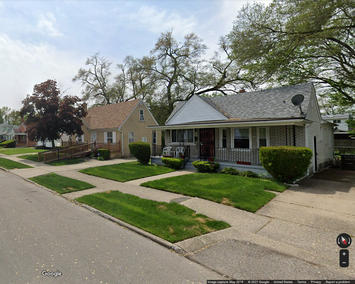
Overseas competition. Automation replacing industrial labor. The inability to adapt to the global economy. Unions. Even the weather. Many reasons are given for why Rust Belt cities have lagged the rest of the nation in their recovery from their industrial heyday. But there’s one under-recognized but still consequential reason – the poor quality of the Rust Belt aesthetic. Rust Belt cities have never quite been known for their looks, and in an era when looks increasingly matter, they often fall short.
It starts with housing. Ever since the national explosion of suburban sprawl following World War II, American households have been chasing newer and larger homes whenever they could. We started by running from crowded urban neighborhoods to spacious, single-family-home dominated communities. We continued to look for more – shopping centers with stores catering to every desire, well-manicured office parks, gleaming new schools, brand new streets and highways. And when the luster wore off, many simply left the old neighborhood behind in search of the newest shiny subdivision with the latest and best.
As we all know, suburban out-migration wasn’t universal. Even as it approached its peak in the ‘60s and ‘70s, there was always a certain segment of society that operated counter to the mainstream. They saw potential in the sturdy older homes, spacious mixed-use buildings, and easy transit access where available. They saw value in proximity to a busy, if unglamorous, downtown. Even more, they bought in to the adaptability of spaces – old factory lofts reimagined as art galleries, former tailor or butcher storefronts becoming bookstores or coffee shops. The builders of the pre-WWII city may not have consciously recognized it, but they built adaptability into the urban framework. Its structures were ready for a new use – once people were willing to bring them in.
Not so for most of the Rust Belt.
Early Rust Belt cities certainly had the look and feel of other cities nationwide, perhaps a little smaller than their East Coast brethren (with notable exceptions) and with more factories thrown in. However something interesting happened in Rust Belt cities as they boomed due to industrial expansion. In the ‘20s prior to the Great Depression, and in the ‘40s and ‘50s following the war, Rust Belt cities saw an explosion of single-family housing construction to meet the demand for labor. Millions of homes were built to serve the millions of people who moved into the region for jobs and new middle class lives. In most cases, little thought was given to their appearance (again, with notable exceptions). The emphasis was on utility. Rust Belt cities needed homes, and they got them.
The poor quality of the Rust Belt aesthetic has been clear for some time. A Time Magazine article entitled “Decline in Detroit” from 1961 – yes, 1961 – had the following to say in its opening paragraph:
“If ever a city stood as a symbol of the dynamic U.S. economy, it was Detroit. It was not pretty. It was, in fact, a combination of the grey and the garish: its downtown area was a warren of dingy, twisting streets; the used-car lots along Livernois Avenue raised an aurora of neon. But Detroit cared less about how it looked than about what it did—and it did plenty.”
Read the rest of this piece at Corner Side Yard Blog.
Pete Saunders is a writer and researcher whose work focuses on urbanism and public policy. Pete has been the editor/publisher of the Corner Side Yard, an urbanist blog, since 2012. Pete is also an urban affairs contributor to Forbes Magazine’s online platform. Pete’s writings have been published widely in traditional and internet media outlets, including the feature article in the December 2018 issue of Planning Magazine. Pete has more than twenty years’ experience in planning, economic development, and community development, with stops in the public, private and non-profit sectors. He lives in Chicago.
Image: Google street view, Detroit's northwest side.












